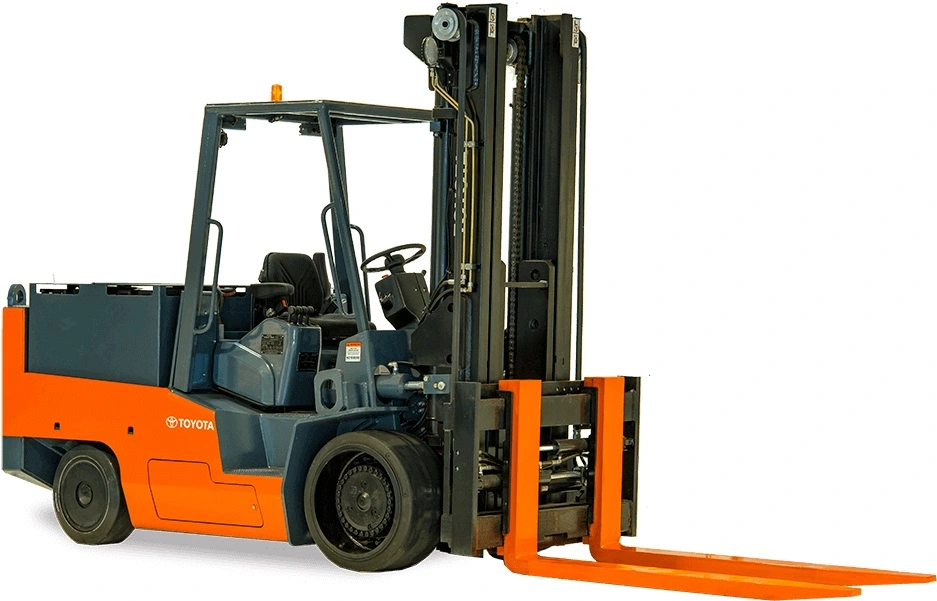Dubai is one of the world’s major trading and logistics centers. It serves an important role in the export of industrial machinery, such as consigning forklifts. Fact is that there is a high demand for forklifts in the construction, logistics and manufacturing industry and most of the companies prefer to export forklifts from Dubai to other countries. But getting a forklift out of the country is not as easy as putting it on a ship. There is a certain process you need to go through to prevent unnecessary wait times and penalties.
In this article, you will learn the key steps involved in forklift export procedures from Dubai. Let’s walk through the entire process to make your export smooth and hassle-free.
Understand the Market and Buyer Requirements
Before you export, be sure you know the market you are shipping to. Forklift Import regulations vary from country to country. However, ensure that the forklift you want to export complies with the standards and requirements in your target country. You’ll also want to verify what the buyer wishes for brand, model, size, and motor type.
Also, be sure to talk about terms of payment and methods of shipping with the buyer beforehand. This is a step that will provide you clarity and avoid future disputes. Looking for a Forklift Supplier in UAE?
Prepare the Export Documentation
Documentation is a crucial part of the forklift export process. In Dubai, exporters must provide certain documents to legalize and ship the forklift. These include:
- Commercial Invoice: Details the value, model, and specifications of the forklift.
- Packing List: Lists the number of units and packaging details.
- Export Declaration: A document submitted to Dubai Customs.
- Certificate of Origin: Confirms that the forklift was sourced or manufactured in the UAE.
- Bill of Lading: Issued by the shipping company as proof of shipment.
- Insurance Certificate: Optional, but recommended for high-value equipment.
Always double-check all the information to avoid delays.
Register with Dubai Customs
The exporter then has to register with Dubai Customs. This is achievable through the Dubai Trade Portal. You can make your export declaration online when you are enrolled. Upon submission of the declaration, you will be provided with a reference number, to track the status of your export clearance.
Be sure to factor in that you may be responsible for a customs duty or fee depending on your forklift’s destination and value. Many GCC state benefit from low or no tariffs, but some countries outside the GCC may impose import duties.
Inspection and Clearance
When registered and documents submitted, inspection could be conducted by Dubai Customs. Forklift truck has to be clean, perfectly in order and with any safety measure. If the forklift is approved by inspection, will be allowed to go through customs.
Sometimes, particularly for used forklifts, export permit or approval from relevant authorities such as ESMA (Emirates Authority for Standardization and Metrology) may be required. You should always inquire if your shipment needs any special authorizations before arrival. Get details about Forklift Export from Dubai.
Choose the Right Shipping Method
Forklifts are heavy equipment and require special handling. Depending on the size and weight of the forklift, you can choose one of the following shipping methods:
- Roll-on/Roll-off (RoRo): Ideal for driveable forklifts.
- Container Shipping: Suitable for smaller forklifts that can fit inside standard containers.
- Flat Rack Shipping: Best for large or irregularly shaped forklifts.
Select a reliable freight forwarder who has experience in handling heavy equipment exports from Dubai. They will also help you with booking space, handling cargo, and ensuring safe loading.
Track and Confirm Delivery
Once the forklift is on its way, be sure to bring the buyer in on all the tracking information. The buyer will also get a copy of bill of lading to get the goods released at the destination port. In the meantime, it is a good idea to keep in contact with your shipping agent to make sure the forklift shows up in time and is in good condition.
When the buyer receives and verifies the quality of goods, and it is satisfied by the goods, the balance should be paid according to the contract. Are you looking for a Forklift Exporter in Dubai?
Efficiently Export Forklifts from Dubai
The process for forklift export from Dubai is not a single step one. Every step from documentation and customs clearance to inspection and transport is crucial. With a little foresight and enough information, you can make the move much more manageable. In addition to this, Dubai’s fit-for-purpose logistics facilities and relaxed trade rules make it to be one of the best destinations for exporting heavy machinery.
If you are planning to export forklifts from Dubai, always work with licensed agents. Their experience can save you time, money, and effort. Following these forklift export procedures will help you grow your business globally while avoiding unnecessary delays or penalties.
FAQ
To export a forklift from Dubai, you’ll require a commercial invoice, packing list, export declaration, certificate of origin, bill of lading and in some cases, an insurance certificate.
Yes, exporters are required to register using the Dubai Trade Portal under Dubai Customs, prior to submission of the export declaration and clearance of forklift for export.
Yes, Dubai Customs may inspect the forklift to check if it has safety and quality standards, particularly for used or refurbished machines.
Forklifts are exported by RoRo or container or flat rack method, depending on the size and weight.
In some cases, exporting used forklifts may require additional permits or approvals from regulatory authorities like ESMA, especially for older models.

